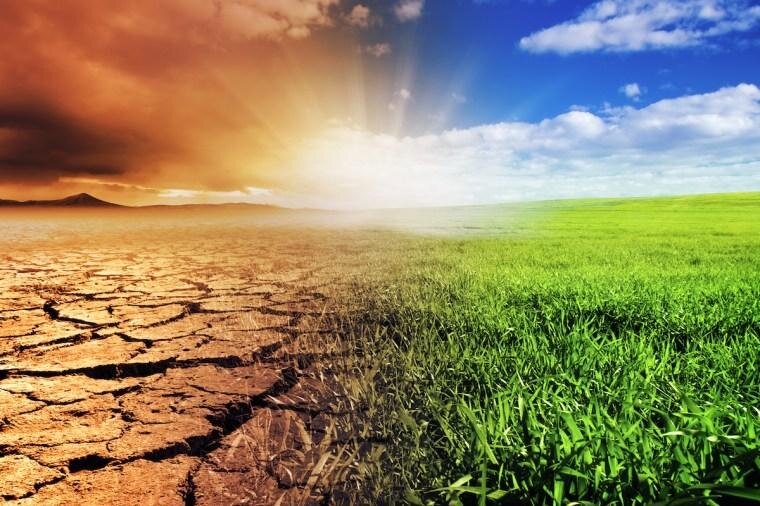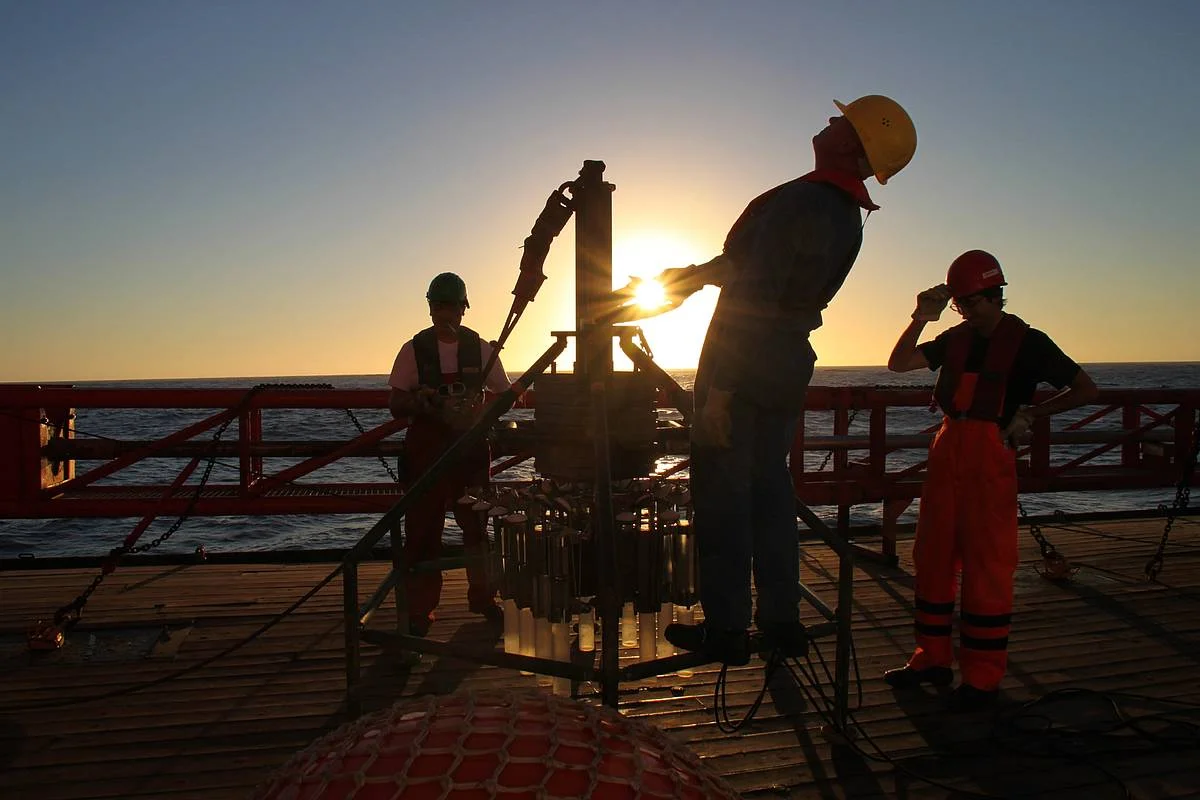
Welcome to iGrow News, Your Source for the World of Indoor Vertical Farming
Global Warming, Decreased Crop Yields, And The Food Waste Industry
With the withdrawal of the US from the Paris Agreement and the proposal of the Green New Deal, concerns continue to grow over global warming and the stability of our food supply
November 4, 2020
Written by Daniel Cunniffe
With the withdrawal of the US from the Paris Agreement and the proposal of the Green New Deal, concerns continue to grow over global warming and the stability of our food supply.
Will global warming affect crop yields?
Among the many impacts of global warming, the two that would likely affect crop yields the most are rising sea levels and more severe, unpredictable climate conditions. Rising sea levels would reduce the land available for farming and severe, unpredictable climate conditions such as strong tropical storms, floods, drought, altered growing regions, or even less rain during the year could decrease crop yields, change the types of crops traditionally grown on a farm, or even make that land unusable for farming.
Smaller crop yields and a smaller food waste industry
The food waste industry depends on the food industry and its crops for raw materials. A decreased crop yield means less food, less food waste, and a decreased food waste industry. One impact of a decreased food waste supply is greater competition between food waste businesses for fewer raw materials. Additionally, if crop yields decrease, the price of food increases, leading consumers to utilize more of a food’s edible potential - a secondary decrease in food waste. Bones, eggshells, and banana peels are commonly thrown away, yet all of these are edible and are more likely to be consumed under conditions of food scarcity.
Different climate conditions, different crops, different food waste industry
Traditionally, farms were handed down from father to son or daughter, where the parent would teach the children what types of crops they could grow along with all of the intricate details and tricks to growing those crops.
Crops that a farm can grow is largely based on the climate conditions of the growing region they’re in, which in turn affects things like soil type, humidity level, etc - all of which are prime factors that allow for healthy crop growth. Global warming will likely shift these growing zones for certain crops. For example, say global warming turns the climate of Canada to that of Mexico, where once Canadian farmers could only grow cold weather crops, now they instead grow oranges.
The idea is that a farm may experience changes in the types of crops they can grow and thus this changes the crops available to local food waste companies. Companies that use waste from a single crop, may have to move locations, ship that food waste from a distant farm, or go out of business altogether as growing zones shift. This will in turn affect the food waste supply chain in ways that the industry may not be prepared for. Growing zones are not concerned with political borders.
If a company depends on a certain crop and the growing region of that crop shifts outside of the country, that company may have to ship food from outside of the country and take on additional costs, such as customs and taxes.
What can the food waste industry do about global warming?
Enter soilless systems - They can be grown indoors and protect crops from severe weather conditions like, droughts, pathogens, and pests. Additionally, companies like Re-Nuble are reducing the carbon footprint of the food supply chain through closed loop agriculture which allows us to avoid further global warming and empower farmers to increase crop yields. This will further ensure a stable food supply, healthy environment, and healthy food for our future.
Tags: closed loop, crop yields, food supply chain, global warming
Lead Image Source: https://sustyvibes.com/impact-climate-change-agriculture
Coastal Erosion In The Arctic Intensifies Global Warming
Sea level rise in the past led to the release of greenhouse gases from permafrost
10. September 2018 | Alfred-Wegener-Institut
The loss of arctic permafrost deposits by coastal erosion could amplify climate warming via the greenhouse effect. A study using sediment samples from the Sea of Okhotsk on the eastern coast of Russia led by AWI researchers revealed that the loss of Arctic permafrost at the end of the last glacial period led to repeated sudden increases in the carbon dioxide concentration in the atmosphere.
Today, the exact magnitude of the future increase in greenhouse gas concentrations remains unknown. This is partly due to the fact that carbon dioxide is not only produced by humans burning gas, coal and oil; it can also find its way into the atmosphere as a result of natural environmental processes. The positive feedback between warming and the release of ever increasing amounts of carbon dioxide from natural sources is a particular threat. In order to enable a better assessment of whether, and how, such developments are possible, climate researchers study records from the past to find evidence of these events.
Eroding coastline at a Siberian island (Photo: Guido Grosse)
Researchers from the Alfred Wegener Institute Helmholtz Centre for Polar and Marine Research (AWI) together with colleagues from Copenhagen and Zurich have now found evidence of this phenomenon for the Arctic permafrost regions. As the authors report in the journal Nature Communications, through their investigations along the coast of the Sea of Okhotsk in eastern Russia, they were able to show that several thousand years ago large quantities of carbon dioxide were released from Arctic permafrost – due to a rapid rise of sea level. Permafrost is ground that remains frozen year round down to depths of up to several hundred metres, some since the last glacial period 20,000 years ago or even longer. Like a giant freezer, permafrost soils preserve huge quantities of dead biomass, mainly plant remains. When the permafrost thaws, bacteria start degrading the ancient biomass, and their metabolisms release the greenhouses gases carbon dioxide and methane.
Preparing the Multicorer on RV Sonne (Photo: Thomas Ronge)
We now know that about 11,500, 14,600 and 16,500 years ago, significant and sudden rises in the carbon dioxide level in the atmosphere occurred, but the reasons for these three rapid fluctuations remain poorly understood. In order to investigate the causes, a group of researchers led by AWI geologists Dr Maria Winterfeld and Prof Dr Gesine Mollenhauer set off for the Sea of Okhotsk. “Originally we assumed that at the time, the vast Amur River carried tremendous quantities of plant material from the hinterland, which microorganisms in the water then broke down into carbon dioxide. So we collected sediment samples from the sea floor, which we then analysed.” The findings were surprising: deep in the sediment, the researchers found evidence of plant remains that had been deposited on the sea floor. These were several thousand years older than the surrounding deposits, which made it clear that they must have originated in extremely old permafrost that for some reason had suddenly thawed. Particularly large amounts of these plant remains were washed into the sea 11,500, 14,600 and 16,500 years ago. But the Amur’s discharge rate was not significantly higher at those times.
Gesine Mollenhauer and her team found the solution to this puzzle when they looked at the changes in sea level since the last glacial period. About 11,500 and 14,600 years ago, particularly intense melting of the ice-sheets led to what are known as meltwater pulses – and each time the sea level rose by up to 20 metres within a few centuries. “We assume that this resulted in severe erosion of the permafrost coast in the Sea of Okhotsk and the North Pacific – a phenomenon that we can observe in the Arctic today.” This allowed large amounts of several-thousand-year-old plant remains to enter the ocean, some of which were broken down into carbon dioxide by bacteria or deposited in the ocean floor.
To determine whether such permafrost erosion could indeed have been a key factor in increases in the global carbon dioxide concentration, AWI colleague Dr Peter Köhler used a computer model to simulate the global carbon cycle. By estimating the area of permafrost lost to the sea at the time, he obtained data on the likely amount of carbon dioxide released. The results are eye opening: 11,500 and 14,600 years ago, erosion of Arctic permafrost probably contributed to about 50 percent of the carbon dioxide increase, and 16,500 years ago to about a quarter.
The AWI team has thus revealed a process that could become reality in the future. Today the Arctic’s permafrost coast is eroding severely because the region is warming rapidly – in some places the coast is receding at a rate of 20 metres per year. As Gesine Mollenhauer explains: “Our findings show that this coastal erosion is an important process, but to date it has not been sufficiently considered in climate models. Such effects need to be included in future models.”
Original publication
Maria Winterfeld, Gesine Mollenhauer, Wolf Dummann, Peter Köhler, Lester Lembke-Jene, Vera D. Meyer, Jens Hefter, Cameron McIntyre, Lukas Wacker, Ulla Kokfelt, Ralf Tiedemann: Deglacial mobilization of pre-aged terrestrial carbon from degrading permafrost. Nature Communications (2018), DOI: 10.1038/s41467-018-06080-w.










